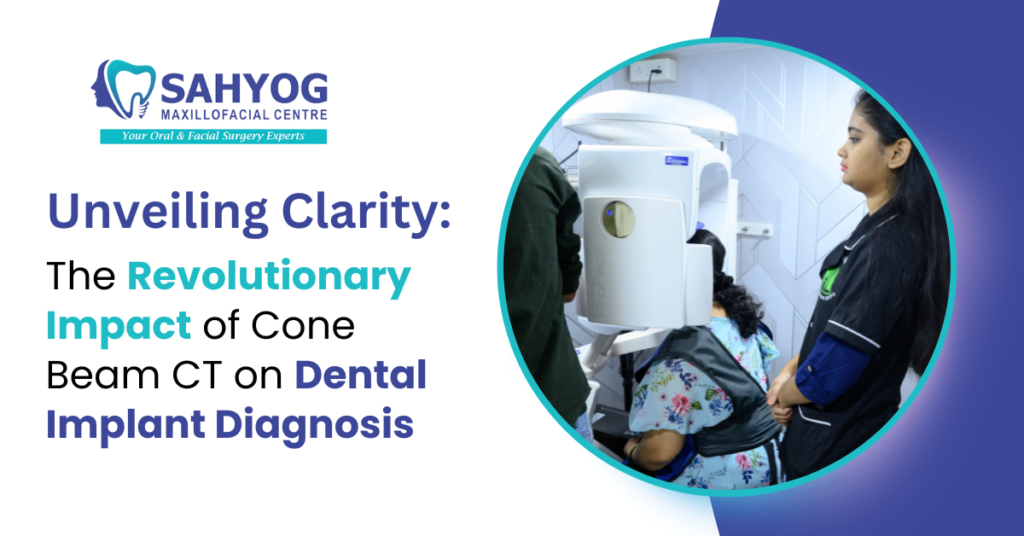Technology keeps expanding the scope of what is possible in the field of modern dentistry. One of the most remarkable advancements in recent years is the introduction of Cone Beam Computed Tomography (CBCT) in dental practices. With its unmatched clarity and precision, revolutionary imaging technology has transformed the way dentists plan and execute dental implant procedures.
In this blog, we will delve into the world of CBCT and explore how it has revolutionized dental implant diagnosis.
The Evolution of Dental Imaging
Traditionally, two-dimensional radiography, such as panoramic and periapical X-rays, was the standard for dental imaging. While these methods have been invaluable in diagnosing and treating dental issues, they have their limitations. Two-dimensional pictures often fall short of offering a thorough perspective of the patient’s oral anatomy, leading to inaccuracies in treatment planning, especially in complex cases like dental implant placements.
CBCT: A Game-Changer in Dental Imaging
Cone Beam Computed Tomography (CBCT) is a 3D imaging technique that has revolutionized the field of dentistry. It resembles conventional CT scans but is specifically designed for dental applications. Here’s why CBCT is considered a game-changer:
i) Three-Dimensional Imaging :
Unlike traditional X-rays, CBCT provides a 3D representation of the patient’s oral anatomy. This 3D data offers a comprehensive view of bone density, quality, and quantity, allowing for more accurate treatment planning.
ii) High Resolution and Precision:
CBCT images are incredibly detailed, enabling dentists to visualize anatomical structures, nerve pathways, and potential complications with unprecedented clarity. Since it reduces the possibility of surgical difficulties, this level of precision is crucial for the placement of dental implants.
iii) Reduced Radiation Exposure:
While CBCT uses X-rays, it does so more efficiently, resulting in lower radiation exposure compared to traditional CT scans. This makes it a safer option for patients, especially when multiple scans are necessary.
iv) Enhanced Treatment Planning:
CBCT allows dentists to plan dental implant procedures with a high degree of precision. They can measure bone thickness, evaluate bone quality, and identify potential challenges before the surgery. This pre-operative planning ensures a smoother and more successful implant placement.
v) Improved Patient Communication:
CBCT images are not only beneficial for dental professionals but also for patients. Showing patients a 3D representation of their oral condition helps them better understand their treatment options and feel more informed about their dental health.
Applications in Dental Implant Diagnosis
CBCT’s impact on dental implant diagnosis is profound. Here are some key applications:
i) Accurate Implant Placement:
CBCT enables dentists to identify the best possible implant site and implantation angle. This accuracy lowers the possibility of problems and increases the implant’s long-term success.
ii) Bone Assessment:
CBCT scan can be used to evaluate the patient’s quantity and quality of bone, which is essential information for assessing whether bone grafting or other pre-implant operations are required.
iii) Nerve and Anatomical Mapping:
Dentists can accurately map the location of nerves and other anatomical structures, minimizing the risk of nerve damage during surgery.
iv) Customized Abutments and Restorations:
Using CBCT data, customized abutments and restorations may be made, ensuring a perfect fit and a natural appearance.
Conclusion
Cone Beam CT technology has ushered in a new era of precision and clarity in dental implant diagnosis and treatment planning. The ability to provide detailed 3D images with reduced radiation exposure has revolutionized implant procedures. Dentists can achieve higher success rates with fewer complications by offering safer, more informed treatment options. With CBCT technology advancing, the future of dental implantology looks brighter than ever.

